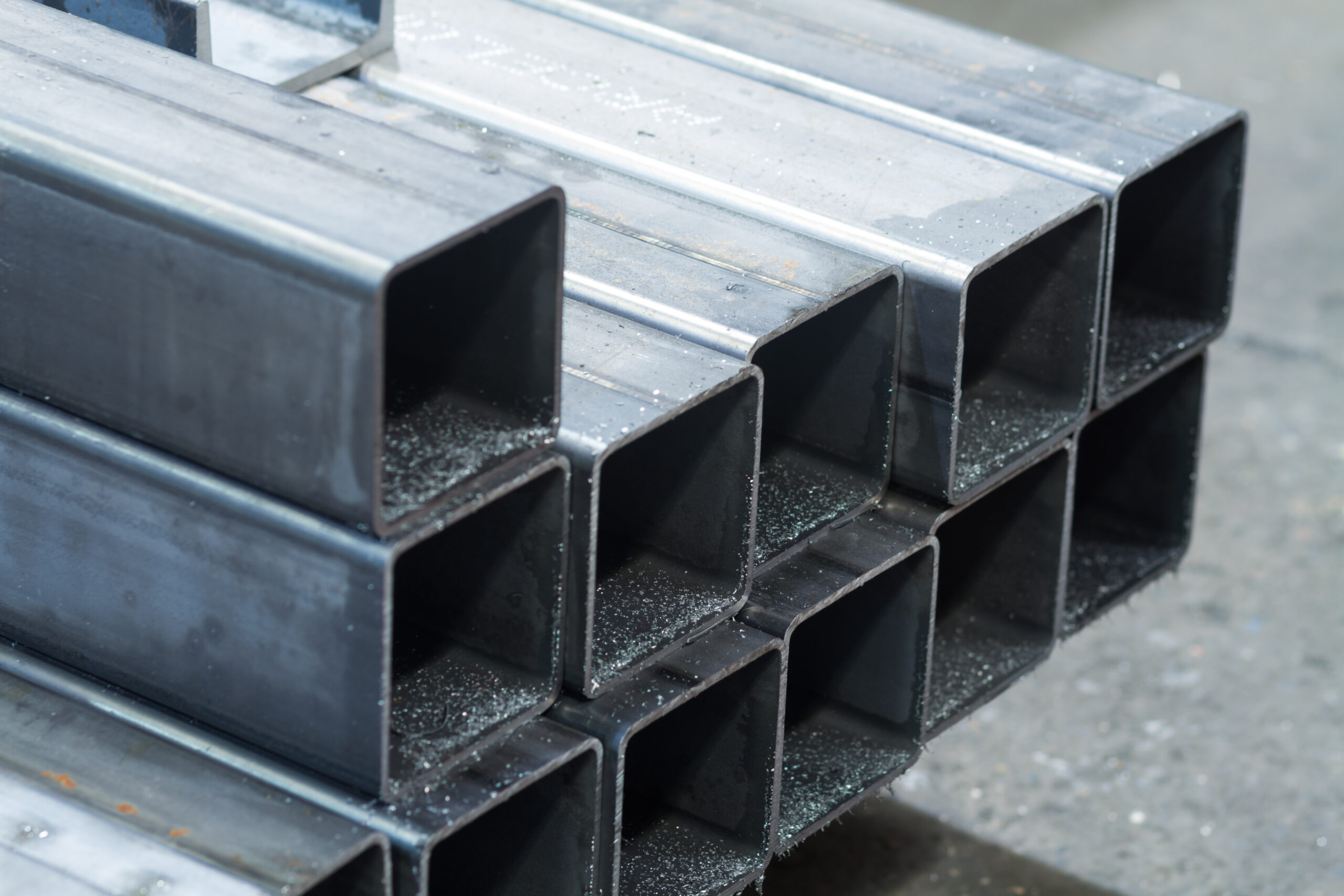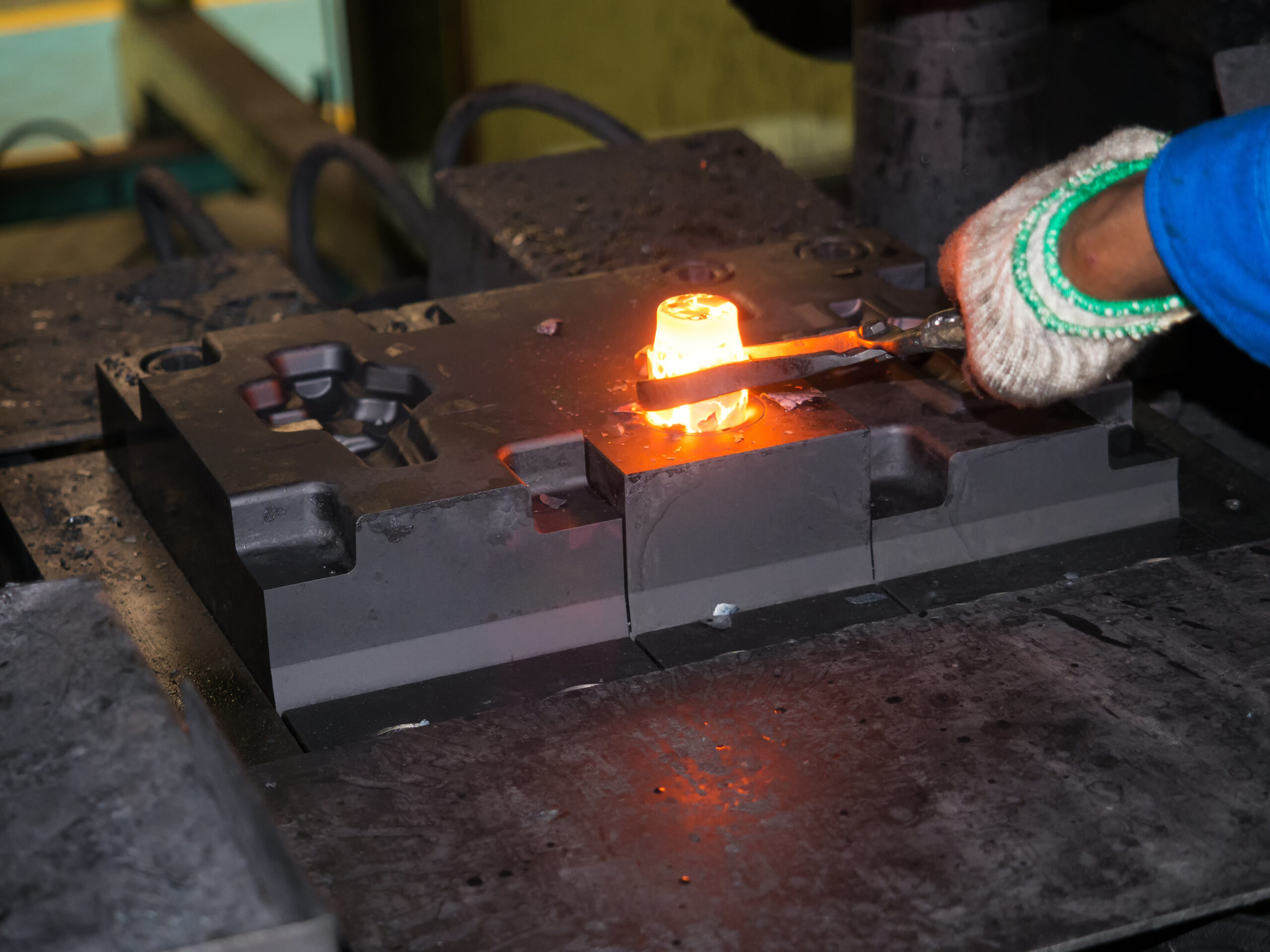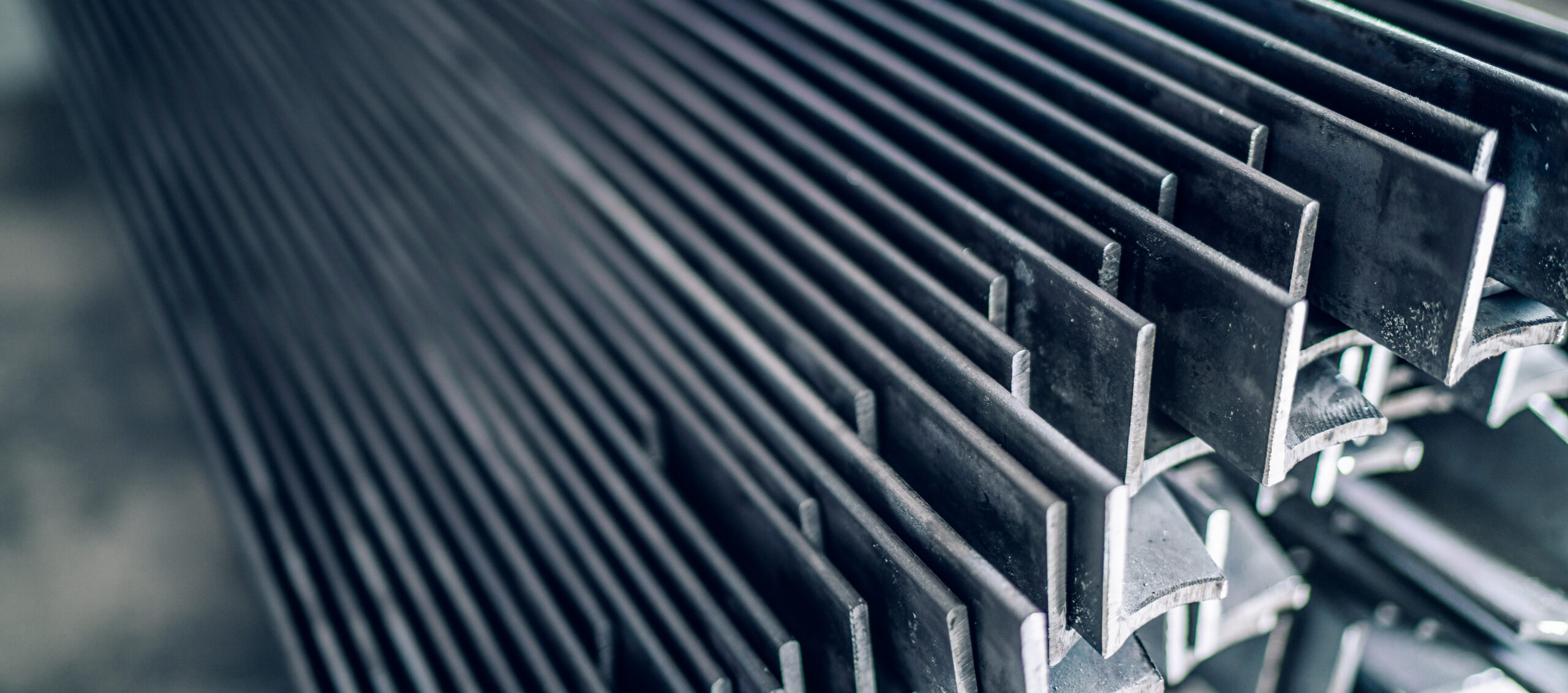
Steel 101: The Four Types of Steel
In manufacturing, material selection is a significant factor in ensuring products perform well within their intended applications. Steel is one of the most common types of materials used in manufacturing due to its high strength and reliability. There are four primary types of steel, each with its own benefits and characteristics.
In this post, we’ll break down these major types, their benefits, properties, and applications, and briefly discuss how steel is graded/classified.
1. Carbon Steel
All steel contains small amounts of carbon. What distinguishes carbon steel from the other types is that it has essentially no other alloying metals. It’s just iron and carbon.
Carbon steel is inexpensive, widely available, and provides sufficient strength and ductility for many applications. At lower levels, carbon steel is also very weldable. Where it doesn’t fare so well is in corrosion resistance and high-temperature strength.
Increasing carbon content raises strength and hardness but compromises some of the other desirable properties. Carbon steel can be broken into three categories:
- Low carbon
- Medium carbon
- High carbon
Low Carbon
Low-carbon steel (under 0.3% carbon) is also known as mild steel. Its machinability and weldability are good and can be readily formed into complex shapes. Common applications include pipe, wire, and general hardware.
Medium Carbon
Medium carbon steel contains between 0.31% and 0.6% carbon, making it harder and stronger than low carbon steel, but also less ductile and weldable. It’s used in railroad applications, mechanical parts, and other similar applications.
High Carbon
The carbon content of high-carbon steel is between 0.61% and 1%. It’s hard, brittle, difficult to weld, and used mostly in high tensile strength or abrasive wear applications, such as blades and springs.
2. Alloy Steel
Alloying carbon steel with one or more other metals, including manganese, chromium, tungsten, molybdenum, and nickel, improves the steel’s mechanical properties. Some specialty alloy steels also use cobalt, vanadium, silicon, and titanium.
By precisely controlling composition, it’s possible to increase properties like hardness, strength, and wear and shock resistance. High-temperature strength is a priority for some applications. Alloying can also increase corrosion resistance or improve toughness and ductility. Some alloy steels are weldable, others less so.
Additionally, alloy steels are sometimes discussed as “low alloy” or “high alloy.” This refers to the proportion made up of elements other than iron, and the crossover (somewhat arbitrarily) is usually considered to be around 4%.
One challenge in creating an alloy steel is balancing the tradeoffs necessary to achieve the desired combination of properties. To address this, most alloy steels are heat-treated to modify their mechanical properties. When the various metals have different melting points, segregation can occur during solidification.
Types of Alloy Steel
There is a wide range of alloy steels, so much so that it would be hard to cover all of them in one blog. The most widely used types of alloy steel have either chromium or nickel as their primary alloying metal, along with vanadium or molybdenum.
One of the most well-known alloy steels is chromoly, a low-alloy steel composed of chromium and molybdenum that goes by the SAE designation of 4130. This alloy steel has a high specific strength, along with excellent fatigue resistance and good corrosion resistance. It’s used extensively in aerospace applications.
Other common alloy steels include:
- 4140: A tough and ductile chromium-molybdenum alloy with high-temperature strength and good creep resistance.
- 4340: A high-strength nickel-chromium-molybdenum alloy.
- 6150: A chromium-vanadium alloy with excellent toughness and shock resistance.
- 8620: A nickel-chromium-molybdenum alloy with toughness and ductility.
3. Tool Steel
Just as the name suggests, tool steel is designed to manufacture tools. Depending on the type of tool being created, different elements are added to give the item varying properties, like extra durability, wear resistance, extreme heat tolerance, etc. Typical applications include test fixtures, dies, and mill rolls.
Air Hardening/Cold-Working
Cold working tool steel is air-hardened or cooled slowly in the air above its critical point without oil or water quenching. Air-hardened steel has a hard martensitic structure with little distortion, good wear resistance, and toughness. Tool steels intended for air hardening have a high chromium content.
Oil Hardening/Oil Quenching
Oil quenching/hardening results in faster cooling than air hardening. Its effect on the mechanical properties of tool steel is improved wear resistance and toughness.
Water Hardening
These alloys are quenched in water, which results in rapid cooling and can cause distortion. Water-hardened tool steels have a low alloy content and are relatively inexpensive. Their major limitations are brittleness and lack of high-temperature hardness.
High-Speed
High-speed steel (HSS) tool steels contain a high proportion of tungsten and often cobalt, too, allowing them to retain their strength and hold an edge at high temperatures. This makes them useful in machining operations, like turning.
Hot-Working
This group of tool steels is intended for use in hot operations like forging. They contain significant proportions of chromium, along with vanadium and molybdenum. Many also have high levels of tungsten, which contributes to its high-temperature strength and toughness.
Shock-Resisting
These tool steels are intended for impact applications, such as in punches and dies. Their hardness comes from silicon, manganese, and other elements like molybdenum, tungsten, and chromium. A downside of their composition is low abrasion resistance.
4. Stainless Steel
Stainless steel is typically used in either corrosive or high-heat environments. High levels of chromium and nickel give stainless steel its unique properties to handle these environments. Common applications are kitchen utensils, saltwater applications, and automotive exhaust. Stainless steel is also commonly found in household appliances, toolboxes, and automotive wheels.
Stainless steel can be categorized by its structure: austenitic, ferritic, martensitic, or duplex.
Austenitic
Austenitic stainless steel contains between 16 to 26% chromium and 8 to 22% nickel, making it highly corrosion-resistant and non-magnetic. This type of stainless steel is often used in food processing, kitchen equipment, and for architectural features. It is weldable but not heat-treatable.
Ferritic
Ferritic stainless steel contains up to 30% chromium and is ductile, formable, and less expensive than austenitic stainless. It’s also heat-treatable and magnetic. Ferritic steel is commonly found in chemical processing and industrial equipment.
Martensitic
With lower levels of chromium and relatively high carbon, martensitic stainless is hard and strong and can be heat treated but is less corrosion-resistant. It is magnetic. Applications include surgical instruments and cutlery.
Duplex
With up to 28% chromium, plus nickel and molybdenum, duplex stainless steels have very high tensile strength, can be welded, and are magnetic. Applications exist in marine environments, plus the chemical and oil/gas industries.
Grades of Steel
In addition to these four categories, the American Society of Testing and Materials (ASTM) and the Society of Automotive Engineers (SAE) have further categorized these steels into different grades. These grades specify the chemical composition and mechanical properties of the steel. You can visit this article to learn more about the different standards/grading systems and this one to learn more about how to select the right grade.
Learn More From King Steel
King Steel Corporation has been an industry-leading U.S. steel supplier for over 50 years, providing manufacturers in all types of industries with steel bar, wire rod, and wire products. Please visit our blog for more resources, or contact us today if you need help selecting the right type of steel for your application.



